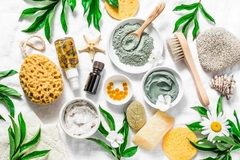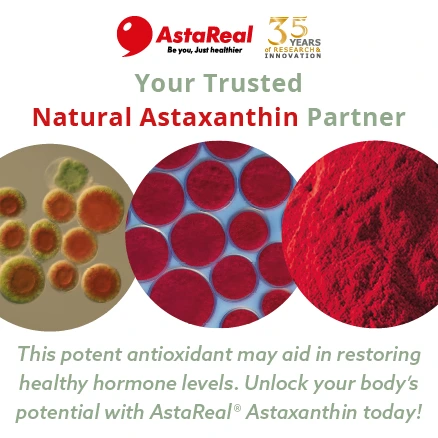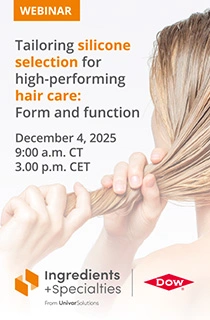Patchy global standards hinder sustainable beauty boom as demand surges
As demand for eco-conscious cosmetics grows, sustainable beauty product developments are surging. Europe leads this trend, while brands like Dow and Univar Solutions tell Personal Care Insights about innovating toward carbon neutrality. Yet, research finds inconsistent global standards challenging unified progress.
Sustainable cosmetics products have gained popularity as consumers increasingly prioritize environmental impact in their purchases.
Innova Market Insights data indicates sustainable claims in beauty product launches increased by 21% from July 2019 to June 2024. Europe accounted for over half (52%) of these launches, followed by Asia (22%) and the US/Canada (13%).
The market researcher adds that face and body cosmetics (34%) are leading the way in sustainable beauty offerings, with skin care (16%), hair care (14%) and lip cosmetics (10%) on the rise. Sustainable eye cosmetics are on a growth path with 33% average annual growth (CAGR, Jul 2019 to Jun 2024).
Inconsistent standards
A study in Brazilian Journal of Pharmaceutical Sciences finds that the demand for sustainable cosmetics is rising, but inconsistent certification standards pose challenges for brands aiming to meet eco-friendly expectations.
With the rise of sustainable cosmetics, regulatory agencies have established various standards to categorize these products, increasing consumer demand. However, the paper underscores a lack of harmonized guidelines across agencies, which is causing cosmetic companies to independently work to create eco-friendly formulations and packaging that reduce environmental damage.
This includes using natural ingredients with specific biological functions, though these must undergo efficacy and toxicological testing to ensure they meet safety standards.
Additionally, the researchers note that consumers and businesses alike have adopted sustainable practices as a result of growing awareness of ecological limitations brought to light by reports from groups like the WWF. The growing “green consumer” market, especially in Europe, where demand for natural and organic personal care products is rising, is indicative of this change.
Research indicates that consumers prefer sustainable options, and the market expansion of synthetic products is slower than that of organic and natural cosmetics.
Global certification organizations have created precise standards for identifying natural and organic cosmetics. High percentages of organic ingredients and eco-friendly production methods are standard requirements, though they differ slightly from agency to agency, say the researchers. These standards also specify processing techniques and packaging materials, but there is no worldwide harmonization of certification standards because of regional variations.
The paper shows that the disparity presents difficulties for cosmetic companies trying to satisfy different regulatory requirements and sustainability goals. This forces them to develop natural ingredients and eco-friendly procedures to satisfy consumer demands for eco-friendly products.
Dow’s key sustainable practices
Jennifer Marques, global strategic marketing director at Dow Consumer Solutions, says the chemical company aims to reach carbon neutrality by 2050.
 Inconsistent global certification standards challenge unified progress in eco-friendly beauty.“One example is our silicon metal production in Brazil. The silicon metal we produce has a 50% lower carbon footprint than the industry average, utilizing renewable energy and responsibly sourced materials,” she explains.
Inconsistent global certification standards challenge unified progress in eco-friendly beauty.“One example is our silicon metal production in Brazil. The silicon metal we produce has a 50% lower carbon footprint than the industry average, utilizing renewable energy and responsibly sourced materials,” she explains.
“A great example for the personal care industry is the launch of our new Dowsil Silicone Elastomer Blends, the first Carbon-Neutral Silicone Elastomer Blends PAS 2060 certified for skin and make-up applications. By investing in the decarbonization of our silicone feedstock’s backward-integrated value chain and compensating the remaining emissions with insets, we provide our customers with carbon-neutral silicones for personal care.”
Marques adds that at Dow Consumer Solutions’ sites, all silicon metals are produced in an environmentally responsible way. “We use best-in-class low-emissions technologies, 90% renewable energy and 100% audited quartz, audited wood chips and charcoal from FSC-certified forests in the production process.”
Technologies to minimize environmental impact
According to Kelly Gilroy, VP of Commercial Sustainability at Univar Solutions, the company works with customers to help them achieve their ESG goals, “often by offering products with lower CO2 emissions” and sharing product sustainability data using its Sustainable & Natural Products Framework.
“Another opportunity to improve the environmental impact of chemicals and ingredients is through logistics efficiency. We help suppliers optimize efficiency by bringing larger quantities of material into warehouses in close proximity to their production facility and more directly shipping to customers through the most appropriate pack size and frequency,” she says.
“With a robust network of warehouses, railcars, trucks, trailers and pack types available, we can help reduce fuel usage, material waste, labor and time. We have also been making our warehouses more efficient and reducing their energy consumption impact by using solar panels, smart lighting solutions, and electric vehicles or renewable compressed natural gas rail pickers and semis.”
Marques adds Dow Consumer Solutions has been working on increasing the share of renewable power in our mix by sourcing and producing “over 55% of electricity from verified renewable sources.” To show hard decarbonization in the direction of net zero, Dow also offers a carbon reduction plan that is monitored annually.
Sustainability challenges
Marques admits that achieving zero emissions and moving to a circular economy requires significant investments and resources.
 Demand for sustainable cosmetics is rising as consumers prioritize environmental impact.“To keep moving toward our commitments, we build a step-by-step approach to capture value for our customers, consumers, society and the industry. We focus on sustainable, profitable growth. Sustainability is an opportunity to innovate and create value to ensure we drive the future of tomorrow,” says Marques. “There is a call for action for collaborative approaches across industry, regulation and society to drive the ecosystem of the future.”
Demand for sustainable cosmetics is rising as consumers prioritize environmental impact.“To keep moving toward our commitments, we build a step-by-step approach to capture value for our customers, consumers, society and the industry. We focus on sustainable, profitable growth. Sustainability is an opportunity to innovate and create value to ensure we drive the future of tomorrow,” says Marques. “There is a call for action for collaborative approaches across industry, regulation and society to drive the ecosystem of the future.”
Meanwhile, Gilroy believes that since there is no singular definition of sustainability, this creates challenges and opportunities in ensuring the right raw materials and ingredients are provided to markets.
“It also means being a good steward in the markets we serve, ensuring customers understand the sustainable products, applications and services that are available so they can achieve their sustainability goals,” says Gilroy.
Effectiveness of sustainability initiatives
Gilroy says that Univar Solutions has published annual ESG reports since 2008, which communicate company goals and achievements in addition to investments.
“At Univar Solutions, we report on the environment (Scopes 1, 2, and 3) reduction targets for 2025, 2030 and 2050, in addition to resource use and release prevention targets. For social, we measure DEI globally, which drives community outreach and hiring practices. Commercially, we report on sustainable products and sustainable sourcing, and we report monthly on progress and opportunity development,” says Gilroy.
Marques adds that Dow’s Intersections Progress Report reflects how it is “putting its ambition into action and contributing to a sustainable future while creating long-term value for customers, employees, shareholders and communities.”
The report details progress in four key areas: “Protecting the climate, advancing a circular economy and safer materials, cultivating a thriving team and community and driving accountability and best-in-class performance.”














